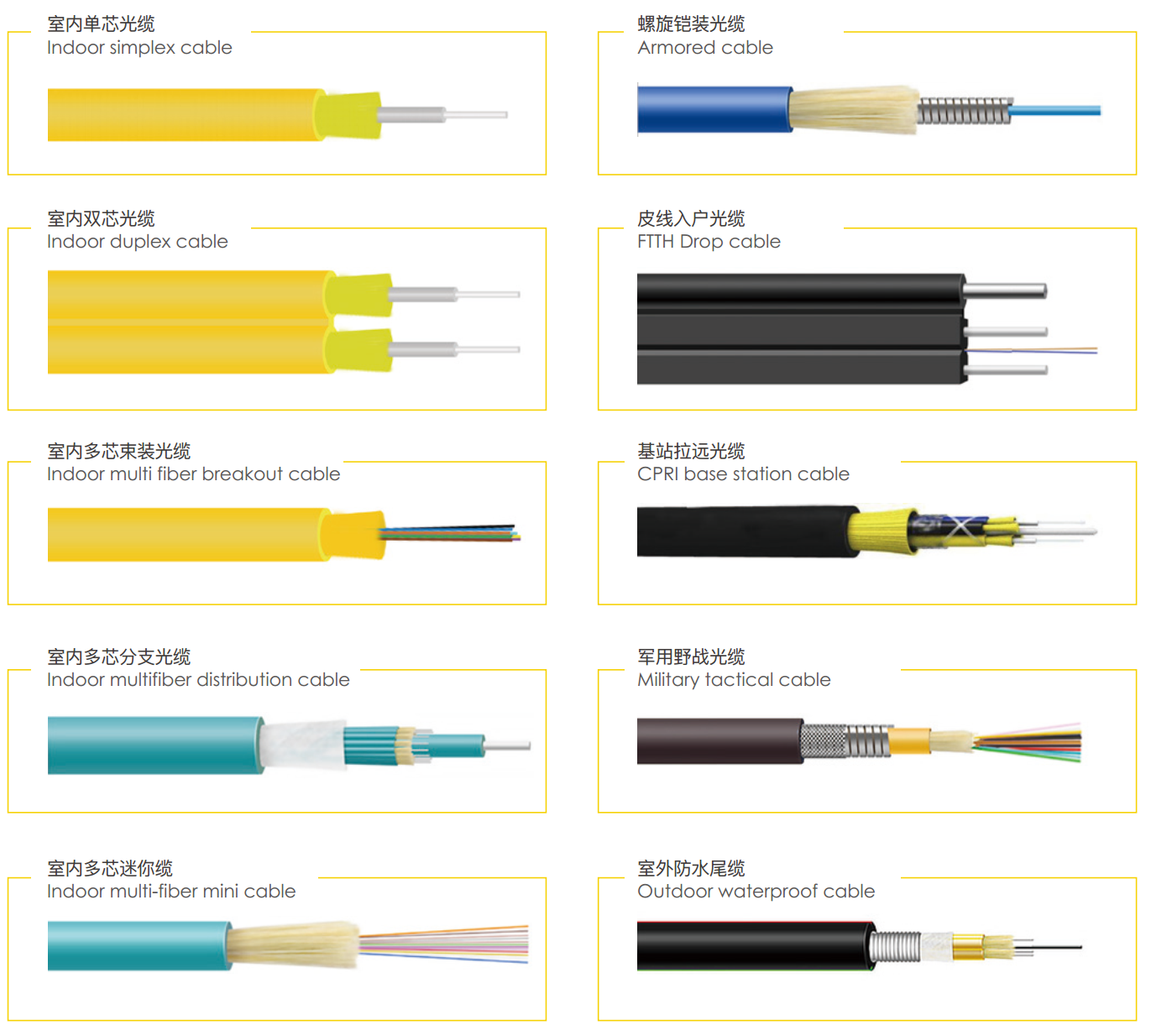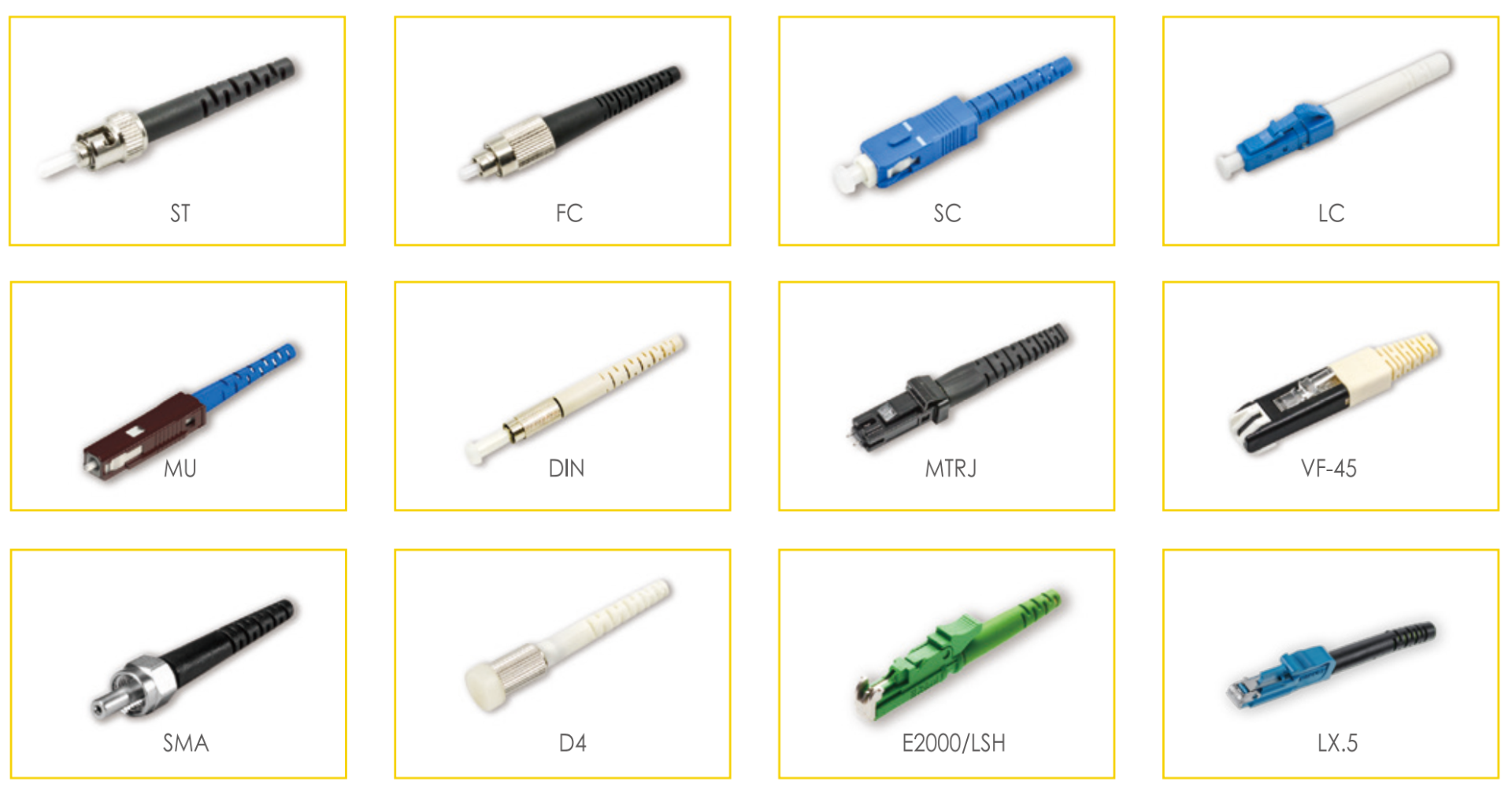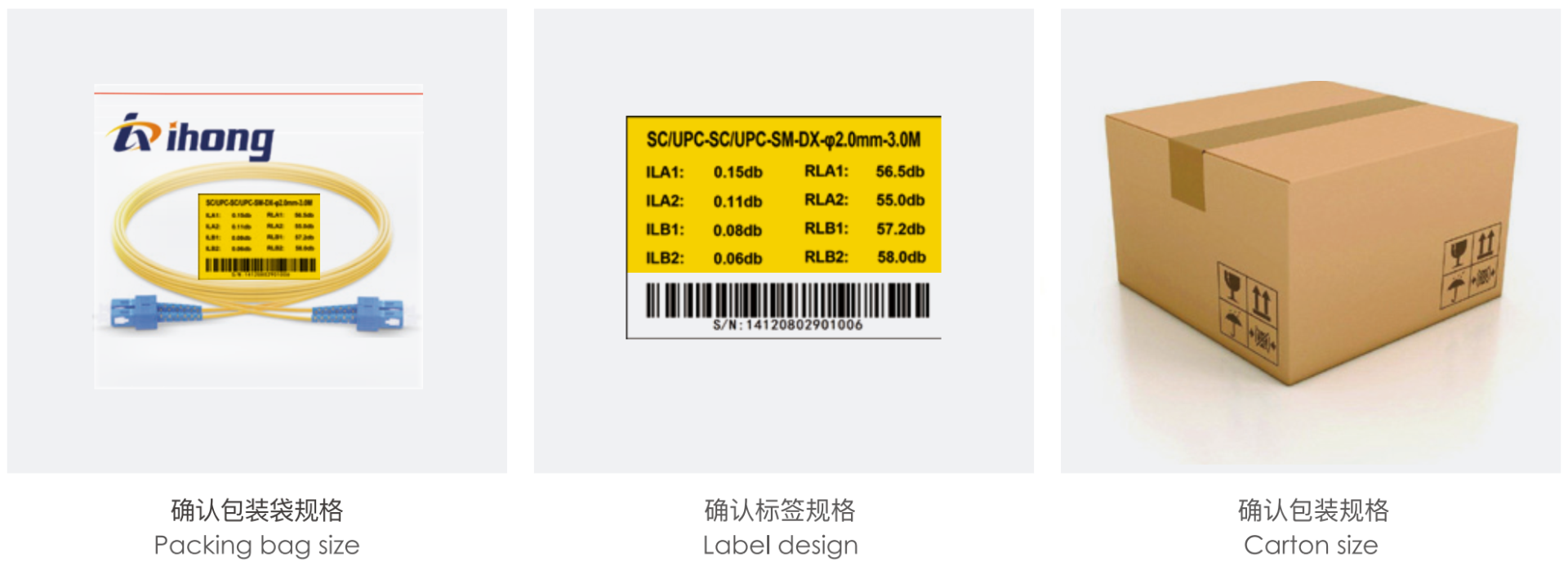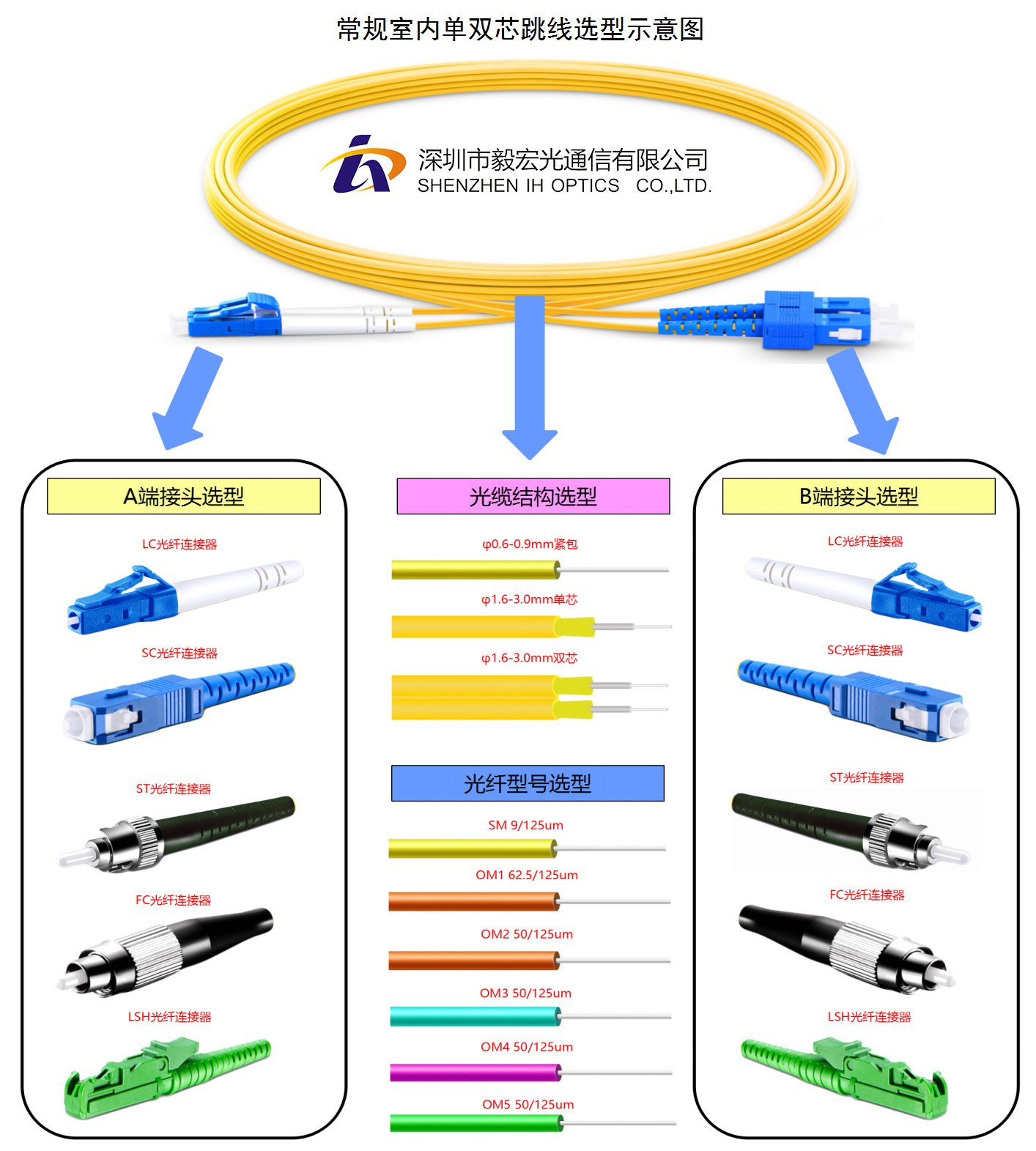Guide for selection of conventional fiber jumper
Fiber jumper refers to an optical fiber connector installed at both ends of the cable to realize the active connection of the optical path. In the actual optical fiber wiring environment, the installation personnel of the construction will face the problem of how to choose optical fiber jumper. This paper briefly introduces how to correctly select optical fiber jumper in the conventional communication wiring environment, so as to facilitate the majority of terminal builders and trade customers to quickly determine the specific type of optical fiber jumper!
The selection of fiber jumper is mainly determined from the following aspects:
Step P1: Select the cable model
Customers according to their actual use of the environment and situation to decide which type of cable to use, if in the room, indoor inter-office wiring environment, choose ordinary indoor cable; If in the corridor, residential outdoor environment, such as the need for cable has a certain strength and rat bite, choose spiral armored cable; If it is used in FTTH household wiring, indoor shaft, pipeline, outdoor short-distance overhead environment, the butterfly-shaped leather cable cable is selected; If the outdoor FTTA base station wiring, connecting BBU and RRU terminal equipment, you can choose to use the base station distance cable, etc. The following is our conventional fiber jumper selection, often used

Step2 Select an optical fiber model
According to the light source of the active device and the transmission band and transmission rate in the link environment, the customer chooses the appropriate fiber core. For example, if the band is 1310/1490/1550nm, the single mode 9/125um fiber is used. If the band is 850nm, the transmission rate is gigabit. Use OM1 62.5/125um or OM2 50/125um gigabit multimode fiber, use band at 850nm, transmission rate of 10 gigabit, according to the transmission distance, choose OM3-150,OM3-30, OM4-550, or OM5-550 fiber.

Step3: Select the connector type
You can select a connector based on the type of the device port you want to connect. For example, you can use the SC connector jumper for the transceiver of the SC port, the LC connector jumper for the SFP optical module, and the high-density optical fiber jumper for the MPO connector for the QSFP optical module. Port waterproof outdoor environment equipment performance requirements, using the special fiber optic jumper waterproof connectors, such as the ODC, ODVA, PDLC, J599, Fullaxs, etc. The following figure simply shows the appearance and shape of some fiber optic connectors that we often come into contact with, for your reference!

Step4: Determine the length of jumper
Customers according to their actual use of the situation, roughly measure their own to use the length of the wire. Shenzhen Yihong Optical Communication Co., LTD., according to customer requirements, arbitrary customized fiber jumper of different lengths.

Step5: Determine the packing details
Customers according to their own packaging requirements, designated manufacturers customize the corresponding packaging specifications, such as cable printing details, label details, packaging bag size, carton size and so on! Shenzhen Yihong Optical Communication Co., LTD., can be customized according to customer requirements, all kinds of cable printing, packaging, as well as special packaging plastic bags, cartons and so on!


Summary: Simply put, the correct selection of fiber jumper, the most important three elements for the cable structure, fiber optic model, connector model three. After determining these three points, we can make clear the length and packaging requirements of the jumper, and basically determine the jumper type we need. We can use the following simple diagram to describe the three elements of jumper selection.





 Prev
Prev 
